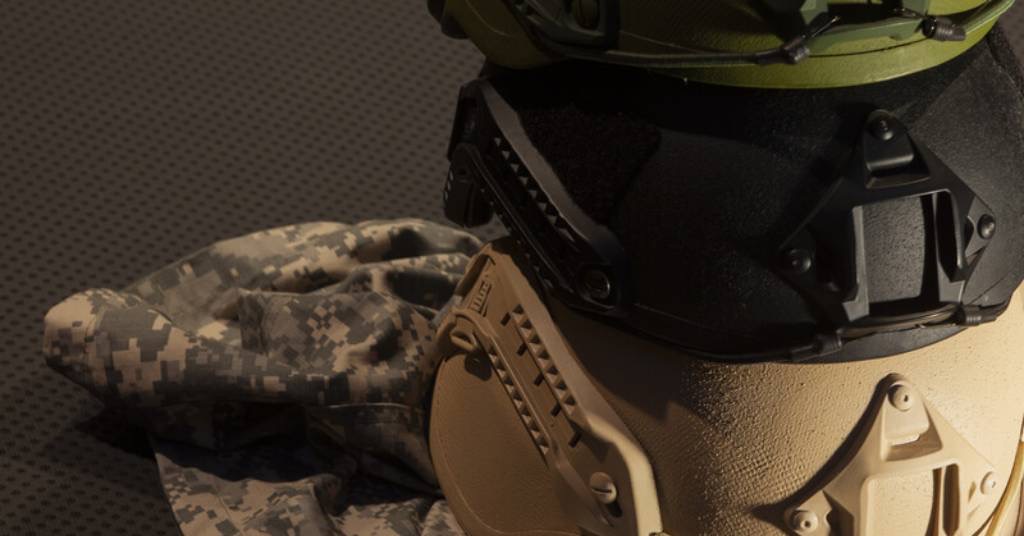Our review today deals with a fascinating item in the vast line of tactical gear products.
I am talking about bulletproof or ballistic helmets.
In this article, we are going to break down our top choices of the best ballistic & bump helmets, and how we came to these picks.
Suffice it to say, the choices of these helmets can be dauntingly confusing to all interested in purchasing one of these.
My mission today is to try and help you become familiar with most all you will need to know and understand to make an intelligent decision in the purchase of a ballistic helmet.
Ballistic helmets come in all kinds of shapes, material construction, size, you name it.
In this review, again, I will try my best to guide you in your purchasing journey by sharing with you information which I deem to be essential in narrowing down and organizing the right priorities suitable to your mission objectives.
In a Rush? Here's the Quick List:
What are Ballistic Helmets?
A bulletproof helmet, better known as a “ballistic helmet,” is a tactical helmet designed, specifically, to protect the wearer’s head from threats such as ballistic impact [bullets], blunt impacts, and debris.
Right off the bat, I want to clarify and say that, as of now, there is no material currently on the market that can be technically called “bulletproof” – this is a fallacy.
Put it to you this way, all the so-called bulletproof materials are, instead, bullet-resistant at best.
Notwithstanding this caveat, however, bulletproof, or ballistic helmets do provide protection against certain threats as will be later discussed in this review.
While a bulletproof helmet is not guaranteed to make you indestructible if shot on your head, with them, the odds of survival are much better than without them – that simple.
History of the Ballistic Helmet
Helmets, I should say, are among the oldest forms of personal protection equipment known to humanity, dating back to the “BC” era, worn mostly then in military or combat applications by ancient Greeks and Romans throughout the Middle Ages, up to the end of the 17th century.
Initially, back in the day, helmets were constructed from leather and brass, later in bronze and iron.
During the “Bronze” and “Iron” Ages, they soon came to be made entirely from forged steel.
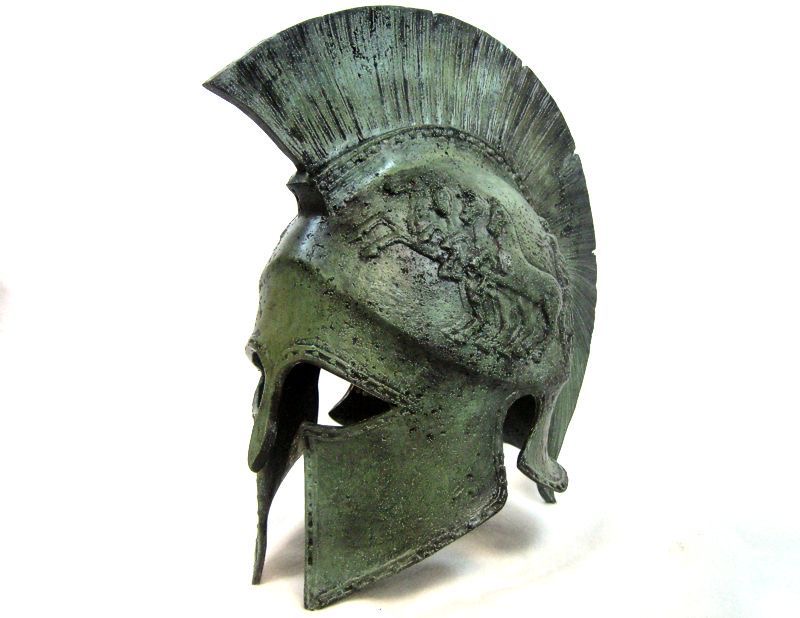
Ancient Greek Battle Helmet
At the time, they were exclusively used as military equipment to protect the head from blows of swords, flying arrows, and low-velocity musketry.
For the most part of the 20th century, combat helmets were bowl-shaped steel shells that fit into a hard-hat type line.
The so-called bulletproof helmet as we know it today, was first adopted in World War I, known as the M1917, which was the U.S. alternative to the British Brodie version, which did little more than keep the soldiers heads protected from explosion-propelled rocks in the trenches.
In 1960, the world of ‘helmets’ was forever transformed by a trend-setting new material called “Aramid”- short for aromatic polyamide - a heat-resistant fiber developed courtesy of the DuPont company.
The novel material was marketed under the name of “Kevlar” – boasting a whopping five times stronger than steel.
As such Kevlar was a game-changer in the production of ballistic body armors and helmets.
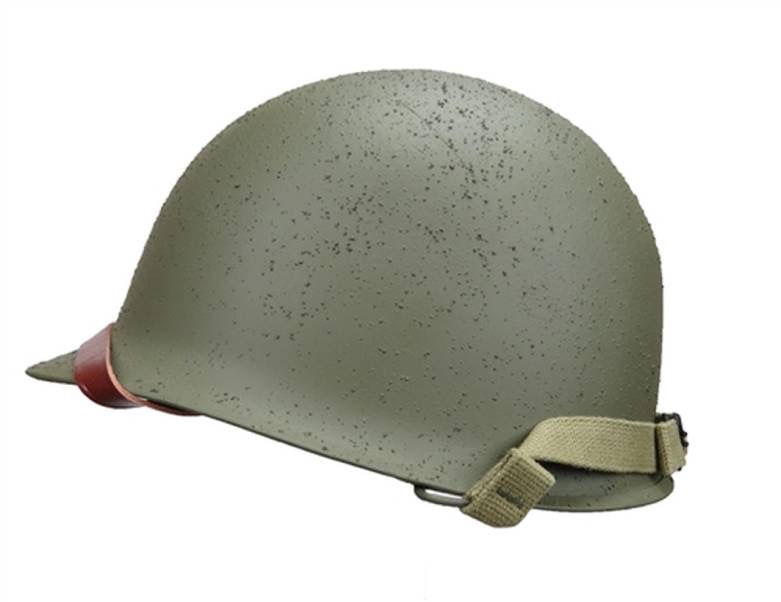
M1 Helmet
The U.S. government first utilized Kevlar in manufacturing the renown M1 helmet for use during WWII as it offered moderately increased protection from flying pieces of steel shrapnel, albeit it was still not bulletproof.
Today’s ballistic helmets serve a two-folded purpose.
Not only do they protect the head area from bullets, blunt impacts, debris fragments, but they also act as mounts for extra gear – a concept which I shall discuss in more detail later in this review.
With the advancement that has taken place throughout the years in combat technology, most modern-day helmets are designed to support communications equipment as well as various other gear and accessories such as NVG’s [Night Vision Goggles] and the like.
Materials / Construction
While there is consensus in that DuPont’s Kevlar was a frontrunner and a trend-setter in the production of modern ballistic helmets, as always, there were other materials which also contributed to re-invent the helmet industry in terms of shape, weight, and others to where helmets became stronger, lighter, and sleeker.
Below, I am listing some of those noteworthy materials that made the difference.
Twaron
In the 1970’s there came along another strong synthetic fiber of the Aramid family by the name of “Twaron” [a brand name of Teijin Aramid].
As Kevlar, Twaron is a heat-resistant and strong synthetic fiber developed by the Dutch company Akzo.
As Kevlar, Twaron is five times stronger than steel, if yet lighter, thus its popularity in the production of products such as body armors and ballistic helmets, specifically used for protection, again, against ballistic impact [bullets], blunt impacts, and debris.
For the record, the only difference between Kevlar and Twaron was the timeline of the introduction into the marketplace.
While Kevlar’s introduction came in the 70’s, Twaron was first used commercially in 1986.
UHMWPE
Another addition in the frontrunning race for making better ballistic helmets was UHMWPE, the acronym for ultra-high molecular weight polyethylene – a material which I personally am remarkably familiar with as my background was in plastics manufacturing where I was privy to learn firsthand about the qualities of UHMWPE – a material which happens to have an incredible strength 15 times stronger than steel.
While UHMWPE might not be as good as Kevlar as far as creep resistance is concerned, it has, still, its own advantage by virtue of it being much lighter in weight than most of its counterparts.
Steel
As I mentioned earlier, the use of forged steel in helmet construction has been around for quite a while and I venture to say, still is.
Nowadays M1 helmets made of steel are still used by military forces around the world for varied activities other than using them in battlegrounds as, the latter’s [M1 helmets] use for military applications was hastily substituted by much more technologically advanced versions, which I will be discussing further along this review.
Other Materials
To be sure, ballistic helmets may also be made from other materials as follows:
Non-Ballistic / Bump Helmets
Bump helmets, as their name implies, are designed specifically to prevent bumps on the head.
Bump helmets are not meant to protect against ballistic[bullets] and blunt impacts.
There is, mind you, a widespread misconception in that many people tend to bundle bump helmets with their ballistic counterparts, and this is wrong.
To be sure, bump helmets and ballistic helmets, while similar in style, serve two quite different purposes, ballistic helmets are designed to protect against bullets and bump helmets are not – that simple.
In terms of construction though, beware as bump helmets may look quite like their Aramid counterparts, however lacking the necessary strength for use in combat encounters of any kind.
The inherent limitations of bump helmets as compared to ballistic helmets makes them out to be significantly lower in price.
Types of Ballistic Helmets and Usage
Mind you, there is an immense, and/or a wide variety of ballistic helmets out there.
As such, in line with the objective of this review, as mentioned in my opening statements, I have classified these vast assortments of helmets into three major categories as follows:
By Style & Function:
There are 4 main styles of ballistic helmets as listed below in the order in which they replaced their predecessors, beginning with the M1 original helmets:
PASGT – Personnel Armor System for Ground Troops
Also known as “K-pot,” and “Kevlar Helmet,” the PASGT replaced the M1 helmets and is perhaps the oldest and most significant design of the three types of helmets we are now reviewing.
The PASGT was used by the U.S. military from 1983 to the mid 2000’s.
Some of the most prominent features of this helmet are its multi-layer Kevlar outer shell, with a distinguishable low cut over the ears and a lip over the brow.
You may say this helmet has been proven to where it is still being used today by the U.S. Army Reserve and the U.S. Navy for sailors on warships.
The PASGT was designed to be outfitted with add-on accessories including but not limited to a mount assembly for night vision [NV] goggles as well as a riot-control visor.
MICH - Modular Integrated Communications / ACH -Advanced Combat Helmet
As mentioned before, the MICH ballistic helmets replaced the PASGT.
They were first introduced in early 2001 while manufacturers decided to develop a design that was lighter, more comfortable if yet as protective or better than its predecessor the PASGT.
In 2002, the U.S. Army adopted the MICH, however the helmet was renamed as the Advanced Combat Helmet [ACH].
Be it MICH or ACH, this helmet weights 3.0 to 3.6 lbs. and it is made of an improved Kevlar material.
Another major change was the elimination of the brown and the raising of the sides, which improved visibility, comfort, and situational awareness.
In addition, rails were added on the sides for mounting accessories.
To be sure, the MICH is currently one of the helmets used by several armed forces, including the U.S. Marine Corps Forces Special Operations Command and the U.S. Air Force Security Forces.
FAST - Future Assault Technology helmets
Enter the FAST ballistic helmet, first unveiled in 2009 by the Ops-Core company, soon thereafter the FAST helmet was used in special operation forces in Afghanistan.
Today, a sizable number of special ops forces use different versions of the FAST helmet.
The one most conspicuous feature setting the FAST apart from other ballistic helmets is its high-cut sides, which leave the ears exposed.
The helmet then curves back down to protect the occipital bone at the rear end of the head.
Yet another feature of FAST helmets is the high-cut style and their side rail system which provides for mounting additional combat accessories such as earphones, electronic earmuffs, and a night vision [NV] goggle shroud.
Another very distinguishing feature of the FAST would be its weight.
Made of Carbon composites, Uni-directional Polyethylene, and Woven Aramid, FAST helmets are significantly lighter than their MICH and PASGT counterparts.
3- ECH – Enhanced Combat Helmet
The Enhanced Combat Helmet (ECH) is a combat helmet designed in conjunction of a joint program of the United States Marine Corps and United States Army to replace the current combat helmets in use by the U.S. Army, Air Force, Navy, and Marines.
Although similar in shape to the Advanced Combat Helmet and its predecessor the Modular Integrated Communications Helmet [MICH], the ECH is constructed using thermoplastics instead of the ballistic fibers used on the current generation combat helmets.
By Level of Protection:
If you missed one of my other reviews on Body Armor, whenever we talk about tactical gear protection, it is essential we refer to the National Institute of Justice or NIJ.
The NIJ is the research, development, and evaluation agency of the United States Department of Justice.
The NIJ rated ballistic protection based on what rounds the item proved capable of stopping during rigorous testing.
To put it in perspective, modern ballistic helmets provide diverse levels of protection levels or ratings, in accordance with rigorous testing standards under the NIJ 0101.06 Standard Levels of Protection.
I will say this much, while I had no problems distinguishing the levels of protection for body armors, I cannot say the same for ballistic helmets.
As far as ballistic helmet levels of protection are concerned, you will find that some of the criteria is borderline to where levels may be grouped as one as is the case with Levels I and IIA.
That said, however, for the purpose of this review, I have classified the various levels of protection as follows:
NIJ – Level I and Level IIA
On the low-end of protection, we have NIJ’s Level I and Level IIA. Helmets under this category are lightweight.
Their protection is relative to only small pistol calibers LIKE A .22 LR and a .38 special.
NIJ – Level II
Level II is, I should say, the most used ballistic helmet by the law-enforcement community and by police officers.
They are light, comfortable, and they will keep you protected against shrapnel, blunt force and handgun rounds up to a .9mm and a .356 Magnum.
NIJ – Level IIIA
Level IIIA protection ideally means that a helmet was tested to stop up to the following threats: .44 Magnum rounds at a nominal velocity of 1,400 ft/sec.
An NIJ Level IIIA ballistic helmet is ideal for protection against shrapnel and shock prevention.
NIJ – Level III
The Level III helmet is lightweight weighing in at around 4.8 lbs. or less depending on the helmet size.
Level III helmets are rated to stop rounds up to 7.62 x 51mm, 7.62 x 39mm, 5.56 x 45 mm., and lesser threats.
NIJ – Level IV
The highest level of protection is Level IV, rated to stop 7.62 x 51 mm M80 NATO Ball round, V0 at 2200 fps.
To add to its high ballistic protection, it provides a V50 for 17-grain FSP ≥ 3281 ft/sec (1000 m/sec).
By Cut Type and Shape:
Ballistic helmets may be found in several cut types, shapes, and sizes.
That said, however, I can put all of them into three major categories as follows:
Full Cut Ballistic Helmets
Full-cut helmets, you may say, offer the most protection as their sides extend below the ears.
It is not a coincidence that is why most armed forces and security contractors prefer this style of helmets.
These helmets, however, force users to wear international communication devices.
If you are a civilian shooting at the range wearing a full-cut helmet, it might be difficult to wear your full-sized earmuffs.
Full-cut helmets are also heavier, which is offset by offering more surface area to mount accessories.
Mid-Cut Ballistic Helmets
As implied by their name, mid-cut helmets are somewhere between the low and high-cut varieties.
They are not that common these days.
They do, however, have some special applications.
In the military, some terrestrial mobile units use the mid-cut ballistic helmets as their design muffles air noise when moving quickly.
The mid-cut helmets are not that heavy and are practical to be use with custom coms and optics.
High-Cut Ballistic Helmets
High-cut helmets were made to be lightweight.
They were designed to leave enough space on the sides for use with any kind of communication device or hearing safety.
The high-cut helmets are most used by tactical law enforcement personnel such as SWAT units and are ideal for recon squads, combat search and rescue missions in the military.
The high-cut helmets are ideal for longer missions as they are amazingly comfortable to wear.
Again, their main advantage is in their low weight and modularity, as they were devised to be used with all different comms’ systems without need for any adjustments.
Helmet Summary Chart:
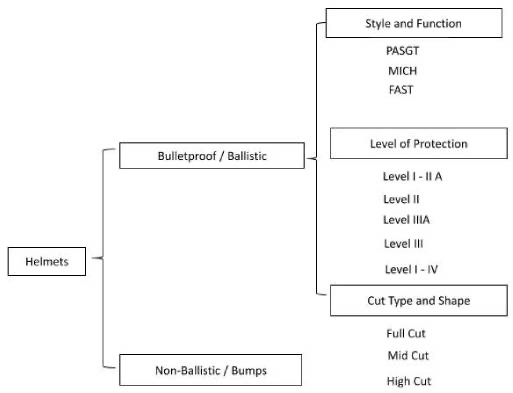
Other Protection
I am often asked the question if there are other reasons to wear ballistic helmets besides that of stopping bullets.
My answer is yes there are.
Besides bullets, ballistic helmets also provide safety from hazardous impacts.
For law-enforcement and other security personnel, ballistics helmets are quite an important asset.
Security forces in general are likely to encounter situations where there are threats to the head from thrown projectiles and other strike hazards, sometimes more so that they are likely to encounter gunfire.
Nowadays, ballistic helmets are an essential part of modern security forces.
In other words, whereas we tend to always associate the use of ballistic helmets exclusively with military applications, the truth is ballistic helmets are suitable for anyone, person or group of persons that might need protection from impacts to the head, thus benefiting from ballistic helmets as much as our military.
A good example are SWAT teams, riot control forces and even patrol officers.
Helmet Accessories
Notably, I have repeatedly mentioned the frequent use of accessories in conjunction with ballistic helmets.
There are, if you will, a vast number of different devices such as communications gadgets, oxygen masks, visors, and many other gears that can be attached to your ballistic helmet.
That said, however, there are two important contingencies you must consider when planning to use accessories, as follows:
Side Rails
If you want to mount an accessory alongside your PASGT helmet, you will need “side rails.”
Side rails have holes and a fastening system specifically designed to interlock with the different devices that you might want to add to your helmet.
NVG Shroud
If you need to mount Night Vision Goggles [NVG’S] as many of us do, you will need an NVG shroud.
This gear allows you to attach the goggles in the forehead area of your helmet and flip them towards your eyes as needed.
Fitting Mechanisms
There are, if you will, several fitting mechanisms, most of which we will all need at some point or another.
If you are thinking of purchasing a ballistic helmet, I would urge you to consider some of the following fitting mechanisms.
Best Ballistic Helmets - Our Top Picks
So, once again, my main objective today with this review is to make the purchase of your tactical helmet as simple and as practical as I can.
To that end, I have decided to break down my top picks into two major categories, as per my earlier classifications which are:
1) Bulletproof or Ballistic Helmets
2) Non-Ballistic or Bump Helmets
I - Bulletproof / Ballistic Helmets
So, in keeping up with my opening commitment of making life simpler for you, I have made my top pick choices categorizing them exclusively by price ranges as follows:
Ballistic Protection: NIJ IIIA (0106.01-0108.01)
Notably all ballistic helmets share the same protection criteria, namely as per the NIJ Level IIIA (0106.01-0108.01) shown below in TABLE 1.
TABLE 1 NIJ IIIA (0106.01-0108.01) | ||||||
|---|---|---|---|---|---|---|
Protection Level | Test Weapon | Bullet Mass | Distance to soft or hard armor | Maximum BFS (mm) | Velocity conditioned testing of body armor (m/s) | Velocity for new and unworn body armor (m/s) |
LEVEL IIIA | .357 SIG FMJ FN | 8.1 g (125 gr) | 5 m ± 1 | 44 | 430 | 448 |
.44 Magnum SKHP | 15.6 g (240 gr) | 5 m ± 1 | 44 | 408 | 436 | |
A) - Ballistic Helmets – Budget Friendly [Up to $500.00]
1. Legacy MICH Level IIIA Ballistic Helmet
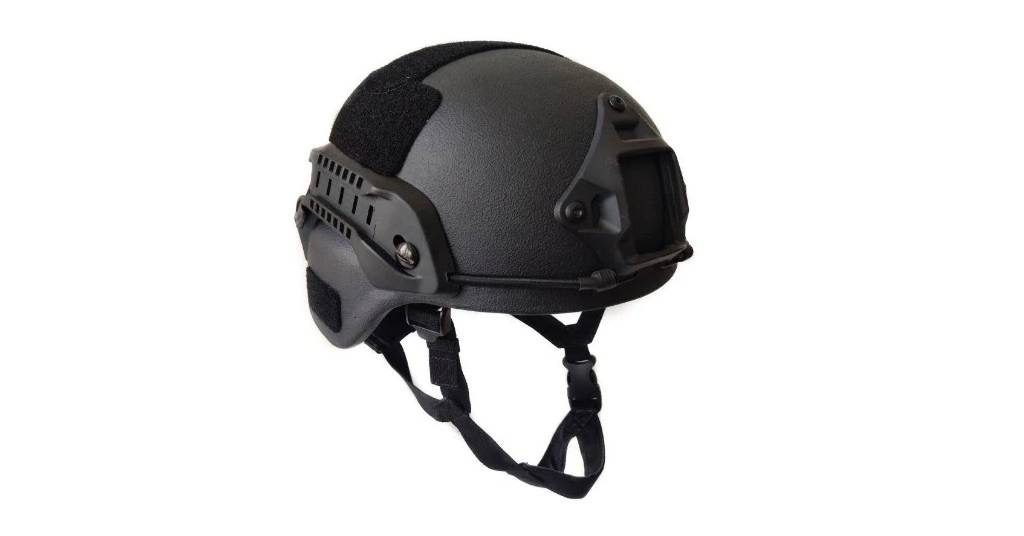
Legacy MICH Level IIIA Ballistic Helmet
Features
Ballistic Specs
ConClusion
I have not much to say about this helmet except for the fact that, at a price point of approximately $340 dollars or thereabouts, I consider this as one of the best ballistic helmets that money can buy.
The Legacy MICH Level IIIA Ballistic Helmet is all about safety and security, which, to me, says it all.
Must seriously consider this one as a preferred choice relative to its price.
2. Body Armor Direct Ballistic Helmet Level IIIA
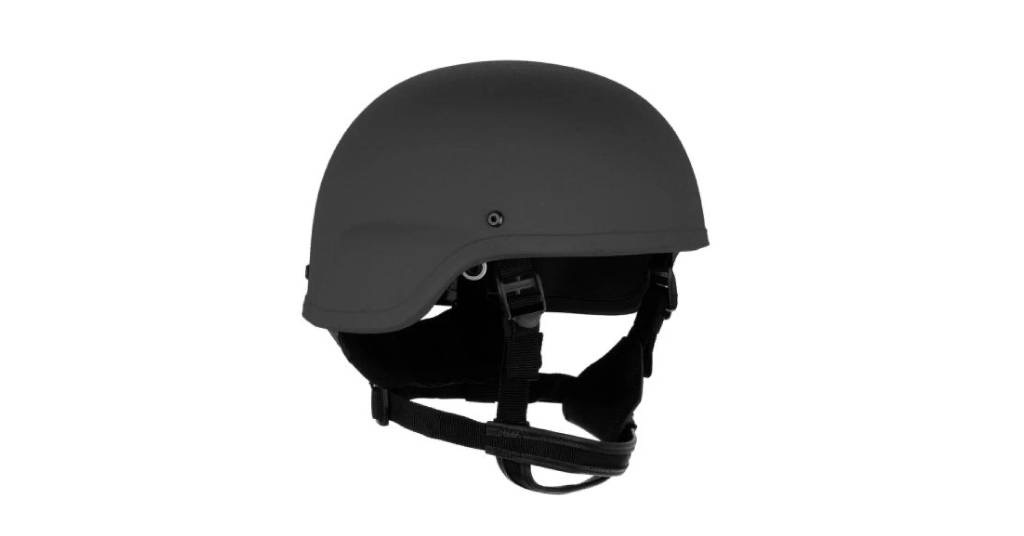
Body Armor Ballistic Helmet Level IIIA
Features
Ballistic Specs
Not Published.
ConClusion
In the price range of $400 dollars, the Body Armor Direct Ballistic Helmet Level IIIA, has plenty to offer.
This is a Level IIIA helmet that provides superior protection but a lot of comfort as well.
This helmet was designed for multiple uses and applications, including but not limited to military contractors, law enforcement, security professionals and others.
This is a sturdy helmet made of pressed Kevlar.
The 4-point harness is made to ensure a secure fit, and the low-profile design allows for an increased field of view and unrestricted movement while still protected in the front, back, crown, and top of the head.
At a very affordable price point, you must give this helmet some consideration in your purchasing decision.
3. Protection Group Denmark ARCH – Level IIIA
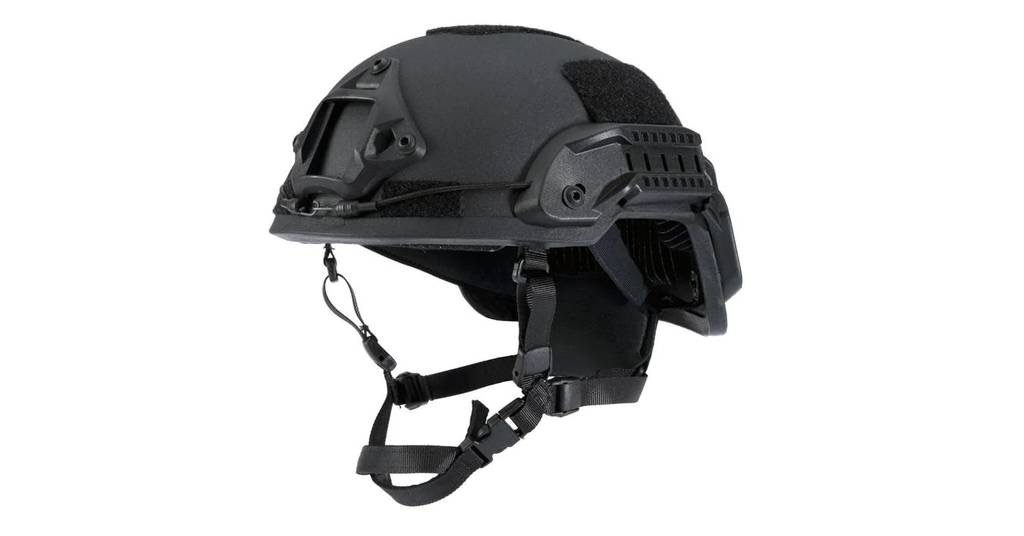
Protection Group Denmark ARCH – Level IIIA
Features
Ballistic Specs
V50 tested with 17 grains at 720 m/s against fragments and shrapnel’s according to STANAG2920 which is the NATO standard for ballistic materials.
ConClusion
One of my favorite features of the Protection Group Denmark ARCH Is that it is a “High-Cut” style designed for allowing room for communications equipment such as headsets and other hearing protection.
The rail system on this helmet allows you to add all kinds of accessories.
At just 1.15 lbs., this is an ideal lightweight helmet, which I strongly recommend for you to check out.
4. North American Rescue Batlskin Viper A3 Level IIIA Bulletproof Helmet
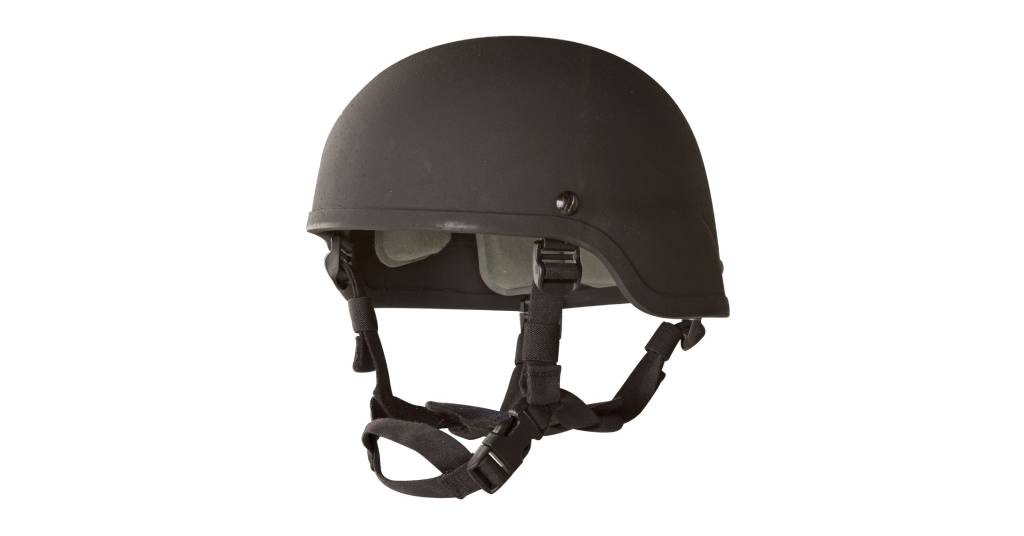
North American Rescue Batlskin Viper A3 Level IIIA
Features
Ballistic Specs
ConClusion
So, what drew my attention to this helmet was the fact that North American Rescue has a reputation for making good products – from their tactical medical equipment to their ballistics helmet line.
The North American Rescue Batlskin Viper A3 boasts a low-profile design with an adjustable crown net.
This helmet protects your head but, at the same time, it is cool and comfortable.
Suggest you include this helmet as one of your purchasing options.
5. Shellback Tactical Ratcheting Ballistic Helmet
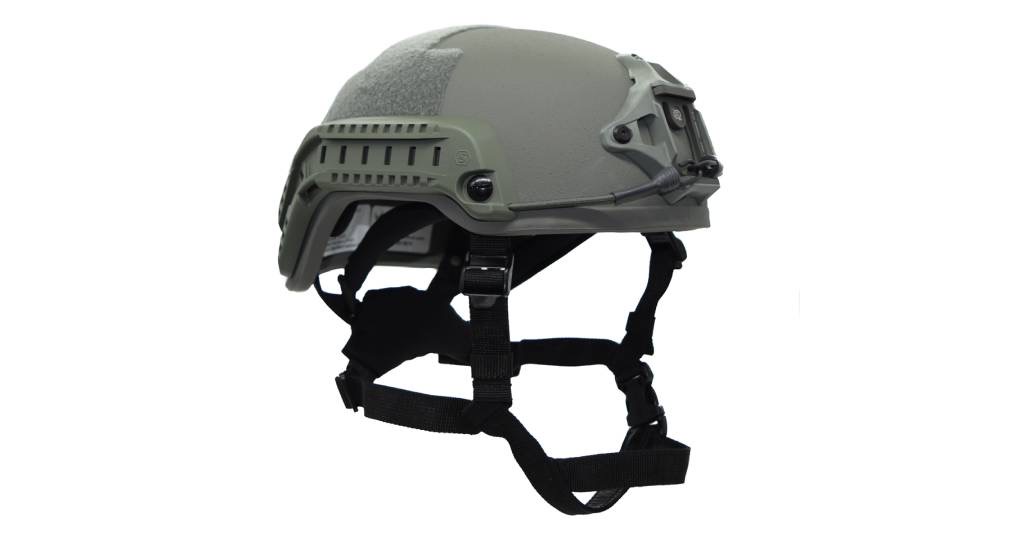
Shellback Tactical Ratcheting Ballistic Helmet
Features
Ballistic Specs
Rounds Defeated:
ConClusion
The Shellback Tactical Level IIIA Ballistic High Cut SF ACH Helmet is a top-of-the-line elite ballistic helmet designed for special operation missions.
This helmet features side rails, 3-hole NVG shroud, loop panels, bungee cords and ratcheting retention system.
The low-profile high cut design provides for easy access to radio headsets, reduced weight and easy target acquisition without interference.
This helmet provides Level IIIA ballistic and frag protection.
I would certainly give this one some consideration.
B) - Ballistic Helmets – Mid-Range Affordable [$500.00 - $700.00]
1. Legacy FAST Level IIIA Ballistic Helmet
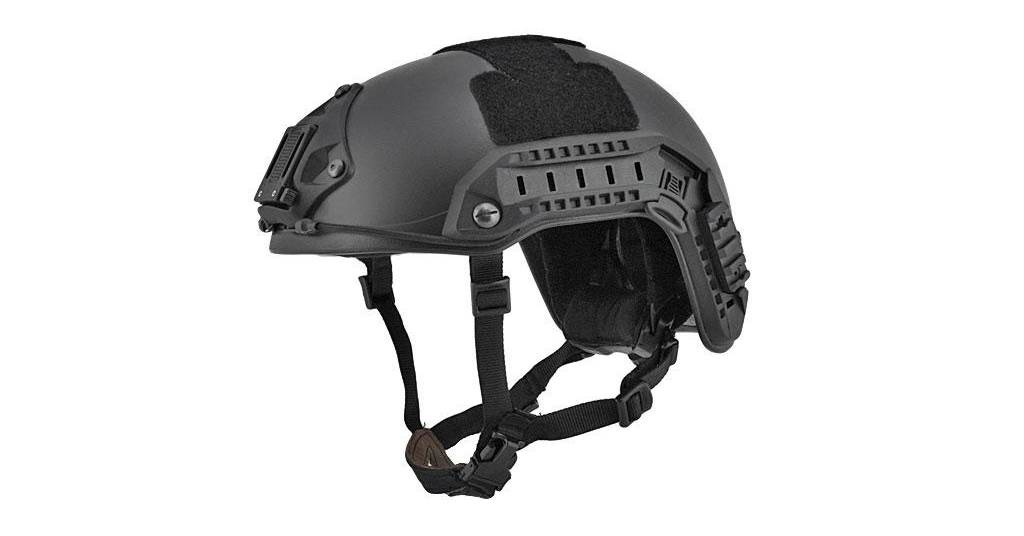
Legacy FAST Level IIIA Ballistic Helmet
Specifications
Ballistic Specs
ConClusion
At a price range of approximately $465 dollars, the Legacy FAST Level IIIA Ballistic Helmet is a frontrunner as far as protection is concerned.
This helmet has been fully tested and proven to merit a Level IIIA Protection under the NIJ STD 0106.01 rating system.
From my perspective, this helmet was designed to be functional featuring high-cut sides for use with communication devices.
All told, no question you need to consider this one among your purchasing alternatives.
2. Hard Head Veterans Ballistic Helmet ATE HHV
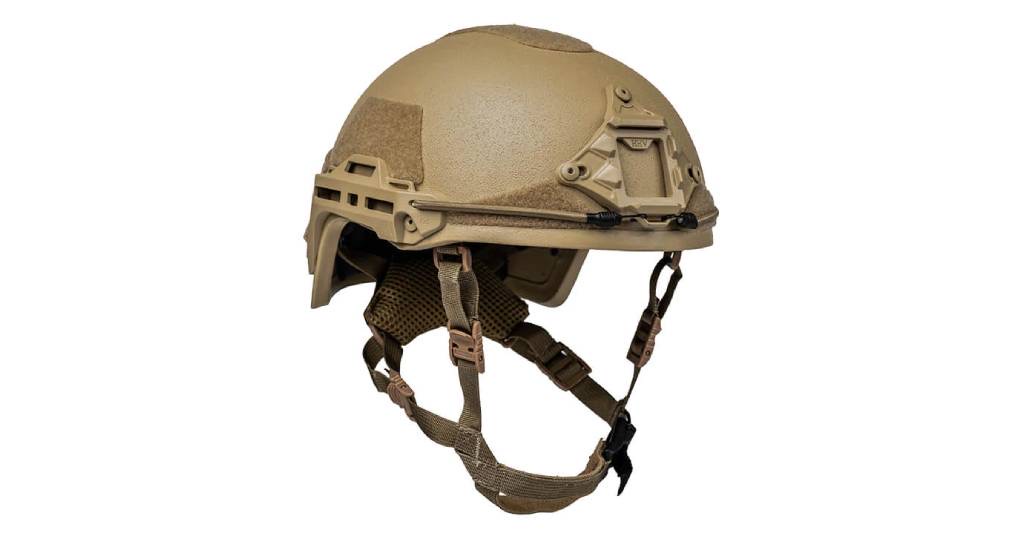
Hard Head Veterans Ballistic Helmet ATE HHV
Specifications
Ballistic Specs
ConClusion
The Hard Head Veterans Ballistic Helmet ATE HHV is a helmet that has all the features at a mid-range affordable price range.
It is made using Aramid Kevlar and has achieved excellent ratings while still being a comfortable helmet.
It features the M-LOK rails and the A3S shroud as well as a 3-part comfort pad system.
I highly recommend you consider this helmet as I personally am quite impressed by what it offers.
3. Atomic Defense MICH 2000 NIJ IIIA Level Kevlar Bulletproof Helmet
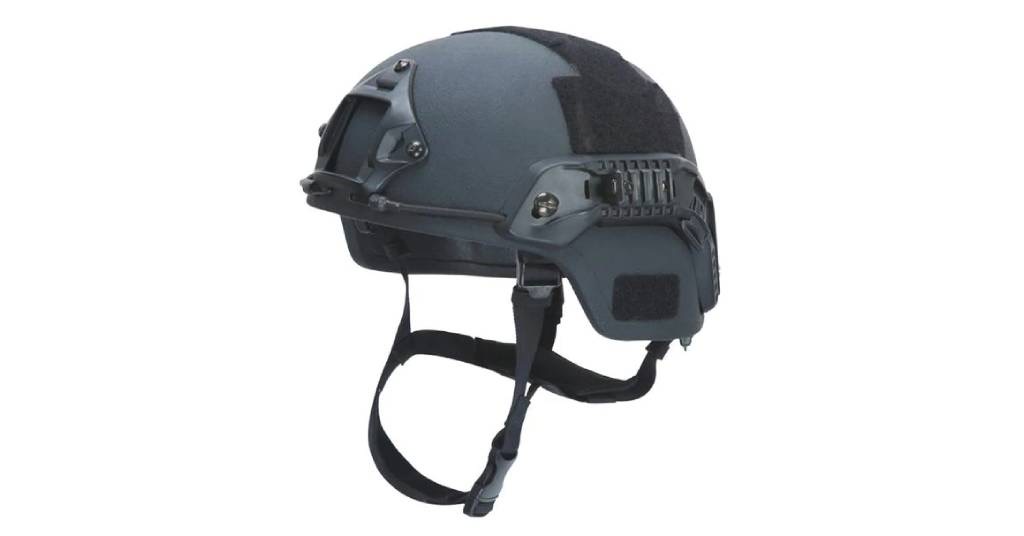
Atomic Defense MICH 2000 NIJ IIIA Level Kevlar Bulletproof Helmet
Specifications
Ballistic Specs
Not published.
ConClusion
So, at a price point of approximately $585 dollars, the Atomic Defense MICH 2000 is definitely worth considering among your purchase options of a ballistic helmet.
This tactical combat helmet shows advantages of good mechanical properties, outstanding aging resistance performance, and one-piece cladding.
From the very first time I saw this helmet, I was impressed with what it offers as compared to similar yet more pricey helmets in this price range.
4. Shellback Tactical Level IIIA Ballistic High Cut SF ACH Helmet
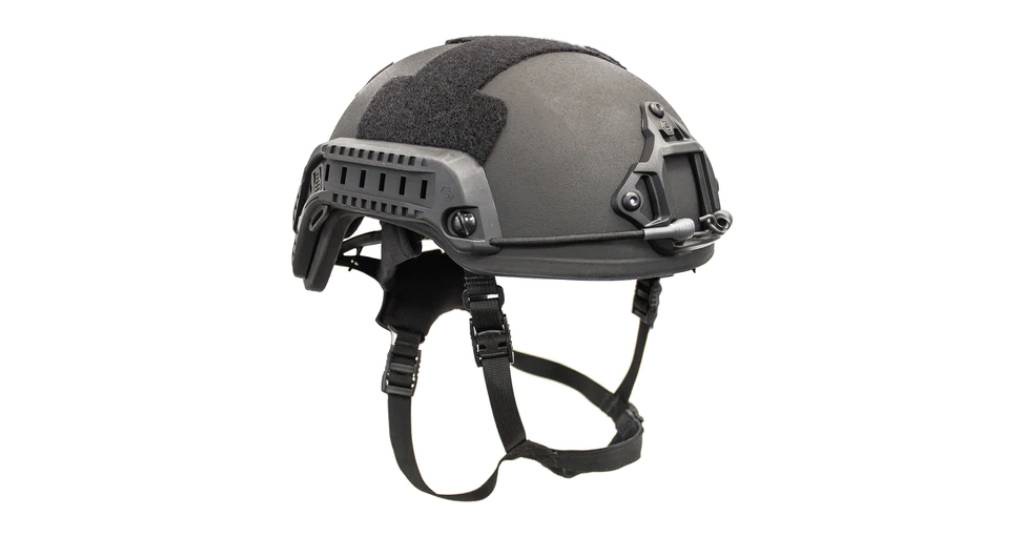
Shellback Tactical Level IIIA Ballistic High Cut SF ACH Helmet
Specifications
Ballistic Specs
Rounds Defeated
ConClusion
You must consider the Shellback Tactical Level IIIA Ballistic High Cut SF ACH Helmet among your ballistic helmet purchasing alternatives.
At a price point of approximately $630 dollars, this is a frontrunner compared to similar ballistic helmets in this price range.
Designed for special operations missions, this helmet features side rails, 3-hole NVG shroud, loop panels, bungee cords, a ratcheting system, and the works.
Cannot get more value for your money. Really recommend you check this helmet before making your final decision.
5. Hoplite Armor IIIA Helmet Fully Loaded
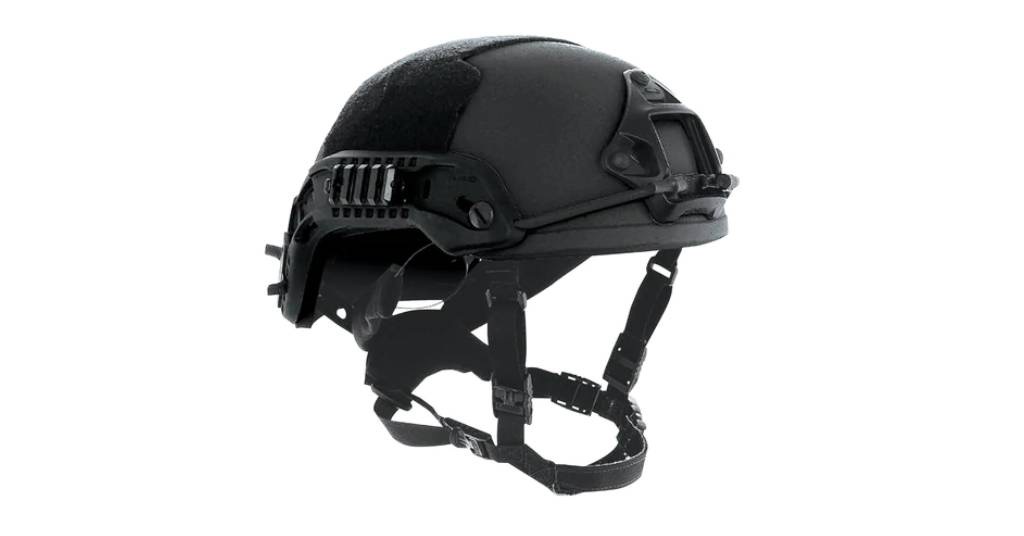
Hoplite Armor IIIA Helmet Fully Loaded
Specifications
Ballistic Specs
Protection Details
Weapon | Ammunition | Striking Velocity ft/s | Striking Velocity m/s |
|---|---|---|---|
9mm | 50-grain USM4 | 2490 | 759 |
9mm | Fiocchi, 115-grain FMJ | 1540 | 469 |
9mm | 124-grain Hydra-Shok JHP | 1230 | 375 |
9mm | 124-grain FMJ | 1425 | 434 |
9mm | 124-grain FMJ Steel | 1262 | 385 |
.357 | 100-grain Frangible SF | 1774 | 533 |
.357 | 115-grain JHP | 1645 | 501 |
.357 | 125-grain SIG FMJ FN | 1475 | 450 |
.357 | 125-grain GDHP | 1454 | 443 |
.40-cal | 95-grain S&W HP | 1697 | 517 |
.40-cal | 115-grain S&W JHP | 1249 | 381 |
.40-cal | 180-grain S&W JHP | 1098 | 35 |
.44 Magnum | 240-grain SJHP | 1412 | 430 |
ConClusion
I will begin by saying that Hoplite Armor has a reputation for making excellent tactical helmets.
The Hoplite Armor IIIA Helmet Fully Loaded, lives up to its name in what it offers.
This is a high-end helmet sold at a very reasonable price of approximately $771 dollars.
I think this ACH tactical helmet offers excellent protection for the money.
For sure, it would be a wise choice to include this helmet among your top considerations in this price range.
C) - Ballistic Helmets – High-End Systems [$1,000 +]
1. Crye Precision AirFrame Helmet
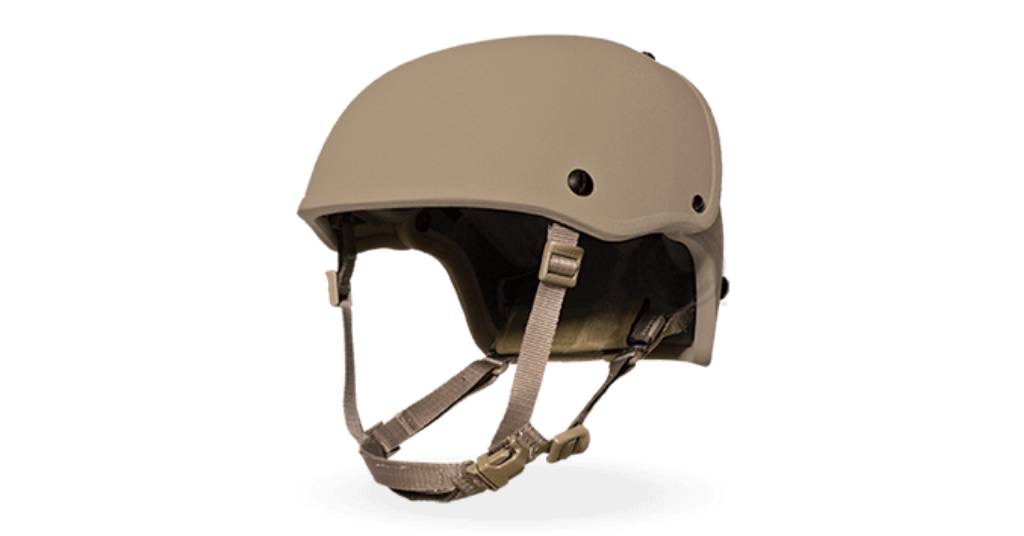
Crye Precision AirFrame Helmet
Specifications
Ballistic Specs
2 Gr RCC | 4 Gr RCC | 16 Gr RCC | 64 Gr RCC. | 9mm 124 Gr FMJ |
|---|---|---|---|---|
V50 | V50 | V50 | V50 | 1195 ft/s, ± 30 ft/s |
≥ 4200 ft/s | ≥ 3475 ft/s | ≥ 2475 ft/s | ≥ 1750 ft/s | ≤ 25.4 mm BFD |
ConClusion
So, we have just entered the high-end range of ballistic helmets at $1000 and up, which, means you are really getting the best of the best of what ballistic helmets can offer.
My top choice in this price category is the Crye Precision AirFrame Helmet.
At approximately $1,100 dollars, this helmet, as seen in the specifications above, has it all.
This helmet sets the standards in protection, comfort, and modularity.
The Air Frame line of ballistic helmets all feature the Ops-Core® H-Nape Head-Loc™ retention system for ease of adjustment.
If you can afford this price point, I will most certainly recommend you consider the Crye Precision AirFrame Helmet.
2. Team Wendy EXFIL Ballistic Helmet with Exfil Rail 3.0
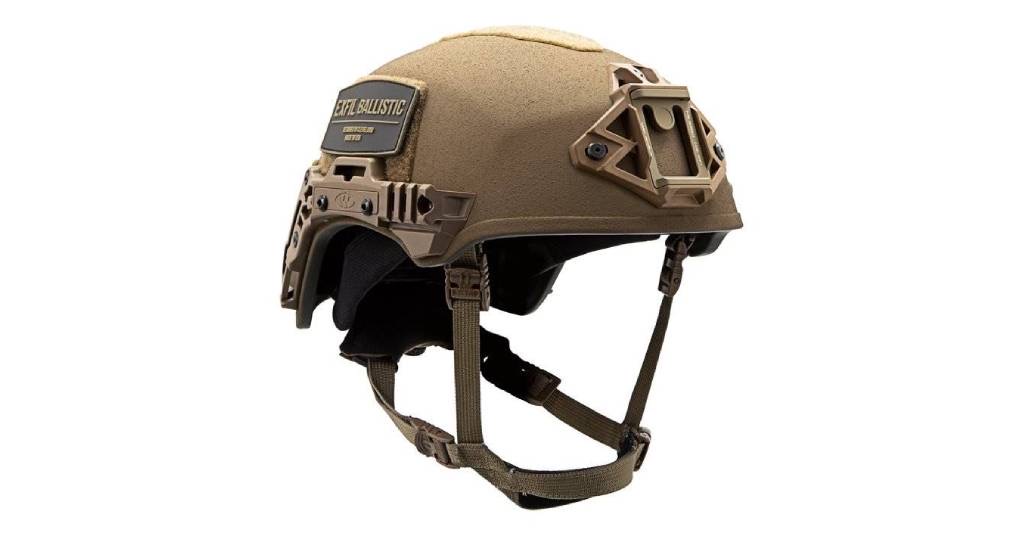
Team Wendy EXFIL Ballistic Helmet with Exfil Rail 3.0
Specifications
Ballistic Specs
Backface Deformation:
9mm FMJ RN @ 1400 ft/s (425 m/s)
BFD < 25.4 mm all locations
Blunt Impact Performance:
Exceeds current ACH Blunt Impact Protection requirements (per AR/PD 10-02) - average below 70G across all impacts and temperatures
ConClusion
The Team Wendy EXFIL is currently sold at approximately $1,176 dollars features a great composite shell for increased strength with a unique geometry for optimal comfort fit.
It also boasts an innovative, boltless retention system designed to quickly adjust to individual head shapes.
The Zorbium® foam liner protects against impact and allows for an overhead communications headband.
To top it all, a lanyard compatible Wilcox® shroud secures any standard NVG mount.
Must check this one out, as it has all you may need in a ballistic helmet.
3. 3M™ Ballistic Helmet System F70
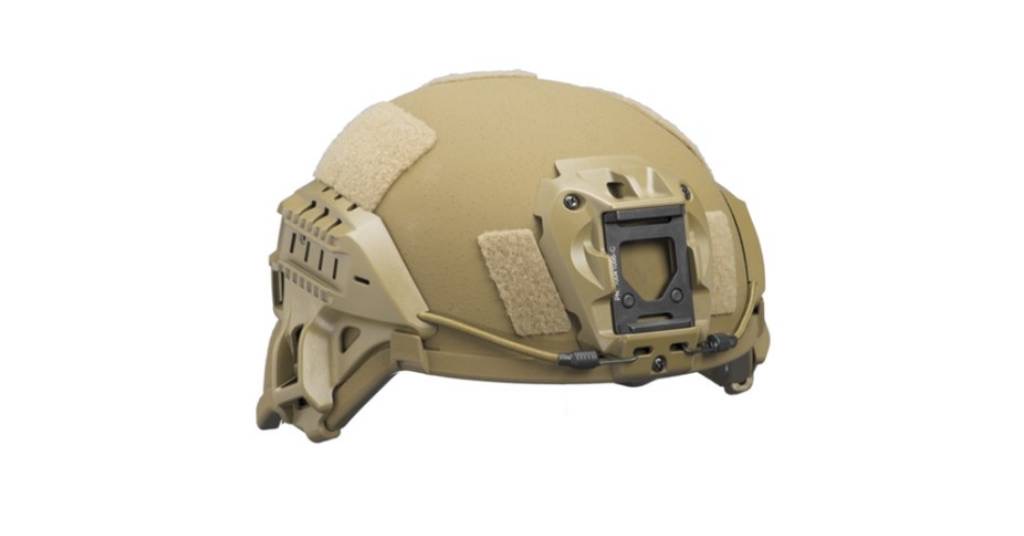
3M Ballistic Helmet System F70
Specifications
Ballistic Specs
ConClusion
Yes, at a price of approximately $1,416 dollars this is a pricey helmet, then again, as always, you get what you pay for.
As far as I am concerned though, the fact that this helmet is made by a company with the reputation of 3M is more than enough for me.
The 3M™ F70 is scalable with a modular platform designed for best fit possible.
In this helmet you can find a perfect combination of weight and performance.
This helmet offers great protection and is well-suited for all kinds of missions.
Highly recommend you check out the 3M™ F70.
4. Ops-Core Fast® SF
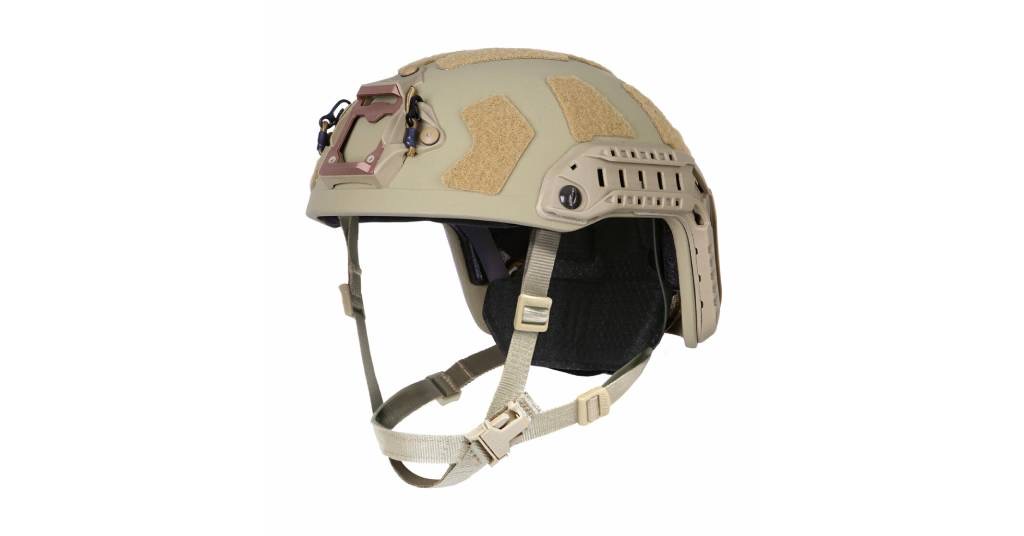
Ops-Core Fast SF
Specifications
Ballistic Specs
ConClusion
At approximately $1,700 dollars, the Ops-Core Fast® SF follows as one of the most worn helmets by Special Operations forces in the world.
The Ops-Core Fast® SF High Cut style improves upon their legacy FAST helmet.
At 1.4 to 1.7 lbs., this is a lightweight helmet, which yet offers all kinds of features and protection.
It comes with a standard rail system, NVG shroud and multiple types of retention systems.
I would not let this one pass you by.
5. MTEK FLUX Ballistic Helmet
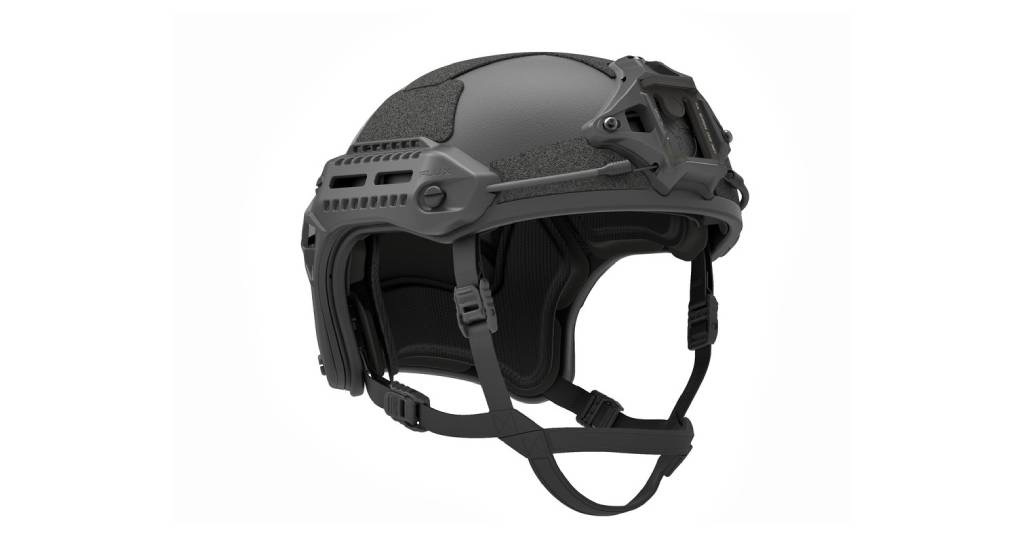
MTEK FLUX Ballistic Helmet
Specifications
Ballistic Specs
Not published
ConClusion
At a price point of approximately $1800 dollars, this is my state-of-the-art pick.
Simply put, this helmet was specifically designed to give you the highest comfort, safety, and modularity, one of the best that you can find in any modern ballistic helmet.
The MTEK FLUX Ballistic Helmet features a lightweight shell constructed of high-performance polyethylene fibers and 100% boltless shell.
The high-cut edge profile was designed to be compatible with a wide range of existing communications.
I could go on and on as there are far too many features to list. Suffice it to say, this one just has it all.
I have to say, the MTEK FLUX Ballistic Helmet is, as far as I am concerned, one of the best ballistic helmets in the marketplace.
Notwithstanding the high-end price range, I would give this helmet some serious considerations.
II- Bump Helmets (Non-Ballistic)
Note: For a long time, bump helmets had a reputation of all being inexpensive across the board.
With modern-day enhanced technology and development, bump helmets have been improved to where they come in all price-points.
At times, bump helmets can be as expensive as their bulletproof / ballistic counterparts.
As such, my top picks today are all-inclusive, as I have picked a diverse range of prices points for varied purchasing options.
1. Lancer Tactical Bump Helmet
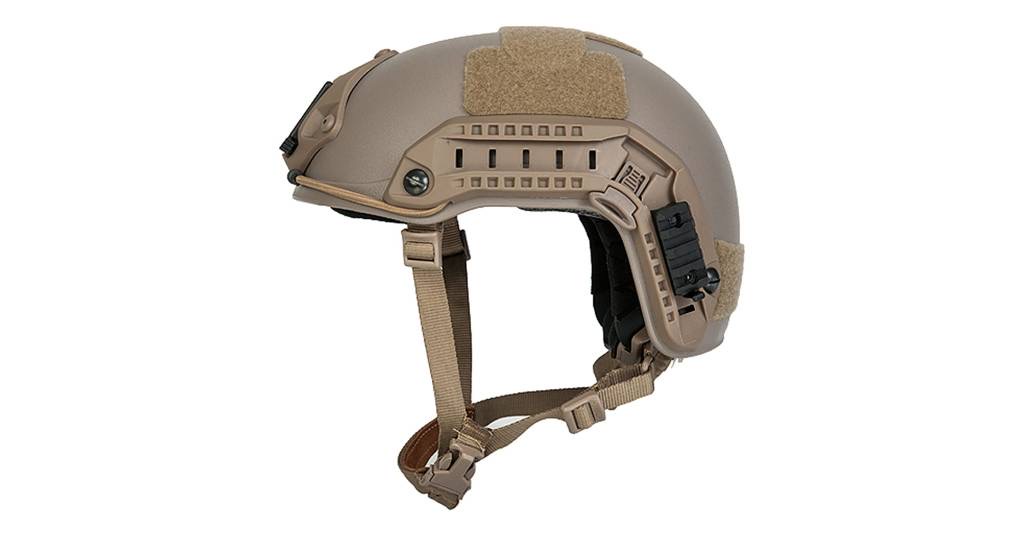
Lancer Tactical Bump Helmet
Specifications
ConClusion
So, at a price range of approximately $70 you just cannot go wrong with the Lancer Tactical Bump Helmet.
If you noticed from the above-captioned specifications, this helmet offers most all features as those find in some of the more expensive ballistic helmets counterparts.
Talk about value for your money, the Lancer Tactical Bump Helmet will give you just that.
2. DLP Tactical ImpaX Extreme Plus Fast Bump Helmet
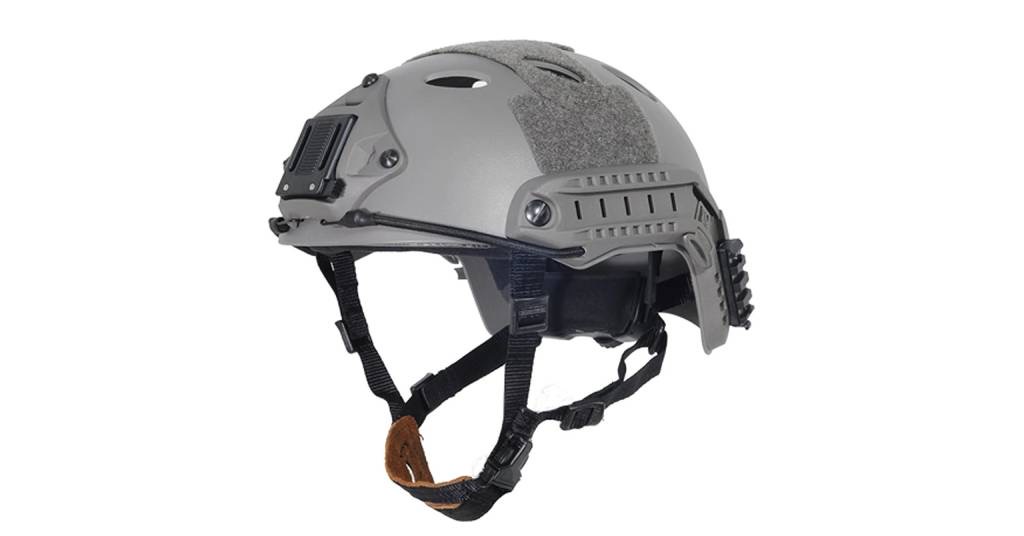
DLP Tactical ImpaX Extreme Plus Fast Bump Helmet
Specifications
ConClusion
My second pick is the DLP Tactical Impax Extreme Plus Fast Bump Helmet.
Again, this is a lightweight non-ballistic bump helmet designed to simulate the MICH / ACH pattern.
This helmet, I must say, is an excellent alternative to heavier helmets, designed for extreme sports, or for training simulation.
At a price point of approximately $130 dollars, I do not think you can go wrong with this helmet.
3. Chase Tactical Bump Helmet
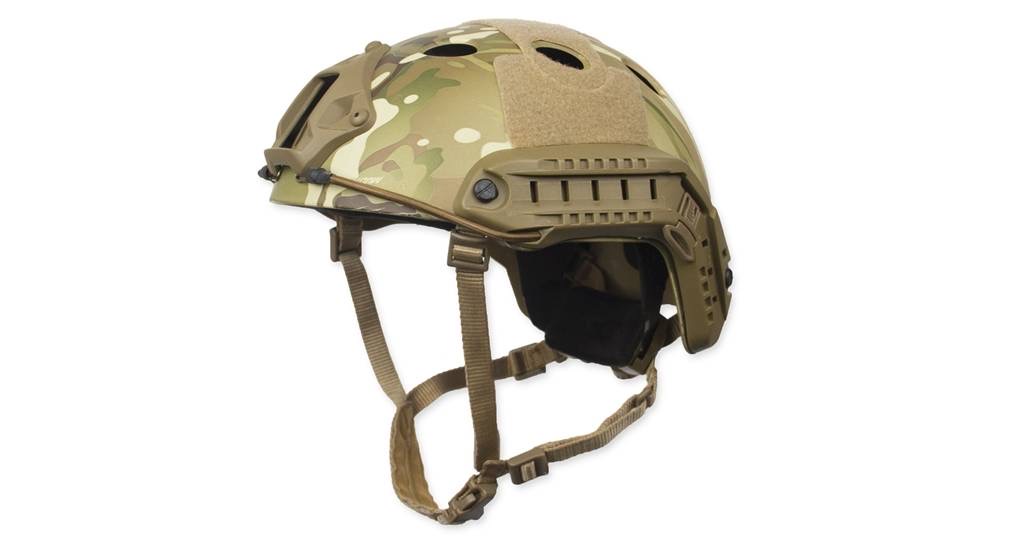
Chase Tactical Bump Helmet
Specifications
ConClusion
My next pick is the Chase Tactical Bump Helmet, one that is priced if yet offering a lot of comfort and versatility.
This super lightweight tactical BUMP Helmet form is a great platform for any helmet accessory you need on the job, from Night Vision accessories to flashlights, our BUMP helmet provides great versatility and protection even in the toughest conditions.
With 13 Colors available, universal sizing, and weighing only 24 oz, the Chase Tactical Bump Helmet is a powerful addition to your tactical kit.
4. Team Wendy EXFIL LTP Helmet
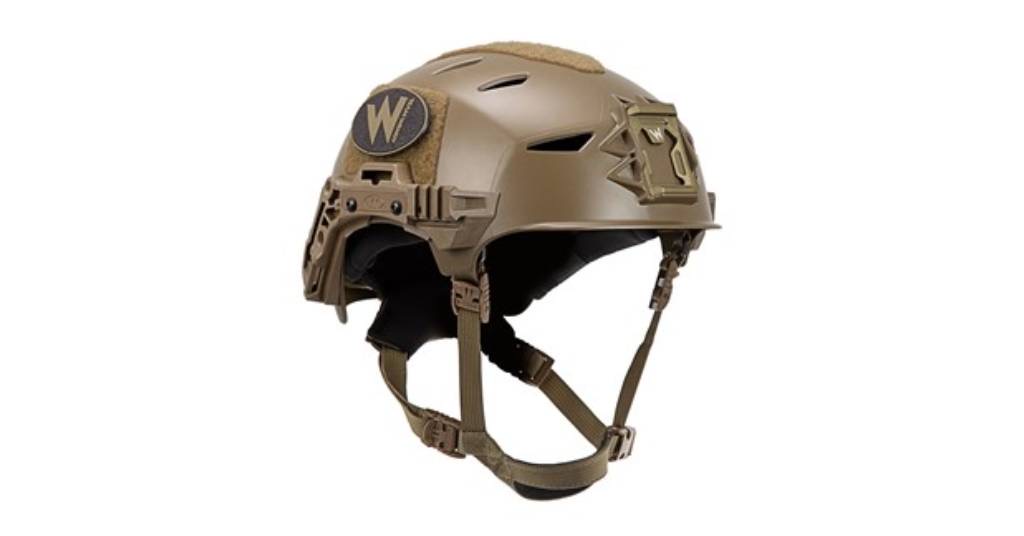
Team Wendy EXFIL LTP Helmet
Specifications
ConClusion
At a price point of a little over $300 dollars, the Team Wendy EXFIL LTP Helmet boasts a foam liner with customizable comfort pads.
The Built-in NVG shroud utilizes an integrated machined aluminum shroud insert optimized for use with night vision devices with single handed quick release.
The Boa Fit System stabilizes the weight of the helmet by distributing a light, even pressure around the head, similar in feel to a baseball cap.
Must check this one out.
5. Ops – Core Fast Bump Helmet
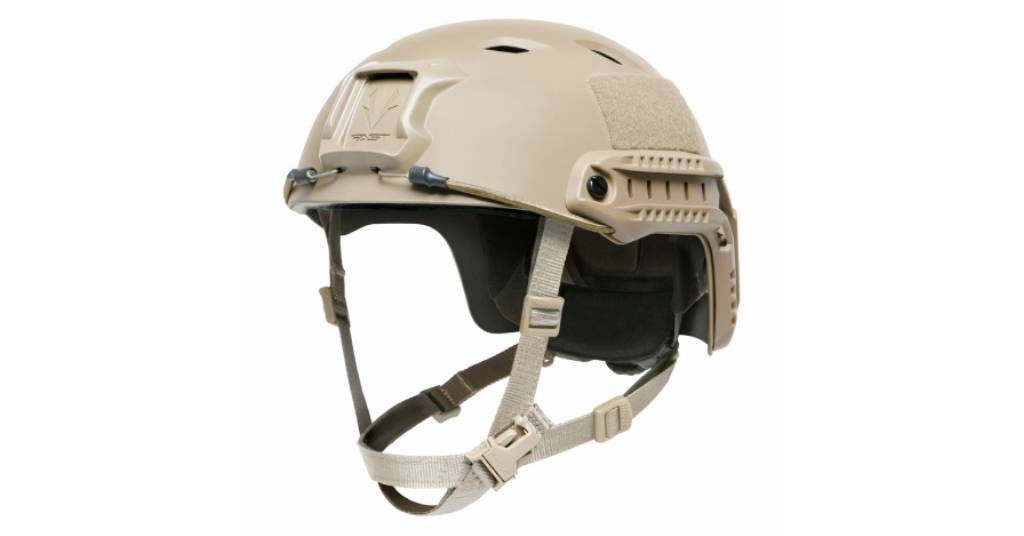
Ops - Core Fast Bump Helmet
Specifications
ConClusion
So, the Ops–Core Fast Bump Helmet was designed for less extreme environments where exposure to great blunt trauma forces is limited or non-existent.
I own one of these and, to this day, I am glad I purchased it for some of my less-demanding missions, where I am not exposed to high impact threats.
What attracted me most of the Ops – Core Fast Bump Helmet was that it is a low-cost alternative to the FAST Carbon model.
Checklist for Minimum Criteria[s] When Buying a Tactical Helmet
Define the Mission
So, the absolute first step in buying a tactical helmet is to define your mission.
First, you must decide and choose between the two major helmet categories:
1) bump helmet or 2) ballistic.
Remember, bump helmets are not meant to protect against ballistic[bullets] and blunt impacts.
Bulletproof helmets or ballistic helmets, on the other hand, are designed, specifically, to protect the wearer’s head from threats such as ballistic impact [bullets], blunt impacts, and debris.
Protection Qualification
If you choose to purchase a bulletproof or ballistic helmet, you should make sure your selection has been tested according to the Ballistic resistance as specified under NIJ Standard 0106.01 as well as the Mil-Std 662f, Stanag 2920, and the HPW-TP-0401B standards ballistic resistance as specified under NIJ Standard 0106.01.
Key Accessories
All buyers of tactical helmets should look for some crucial accessories as follows:
Warranty
My recommendation to all buying a tactical helmet is to try and look for systems that feature a minimum of a 5-year warranty on all ballistic helmets.
Summary and Conclusion
So, as you may have noticed in this review, tactical helmets as such are one of [the] most critical gear pieces of personal protection, bar none.
That said, I cannot emphasize enough the need to define the mission of choice before attempting to buy a tactical helmet.
As noted, throughout this review, nowadays, tactical helmets, both non-ballistic and ballistic as well, come in all sizes, shapes, styles, but, most of all, they are made for all kinds of different applications.
There are, if you will, a wide array of missions, including but not limited to military, law-enforcement, special operation forces, rescue missions, and others with little or no threat levels.
Whichever your mission is, you need to know which helmet is best suited for your objective.
As we come to the end of this review, I would also like to remind all my audience that there is not such a thing as a full bulletproof system.
The best ballistic helmets in the marketplace are limited to protecting you from threats such as ballistic impact [bullets], blunt impacts, debris, and shrapnel but the threat of a bullet piercing through helmet is always present and you should bear this in mind always.
Finally, once you have set your mind as to the type of helmet that best suits your needs, then just make sure you pick a high-quality helmet by carefully considering its specifications.
To that end, I truly hope that this review will have contributed to making your purchasing decision a pleasant and more practical experience which you will always cherish.
Frequently Asked Questions
As I have said many times before in my previous reviews, I contend that this, the “Frequently Asked Questions” or “FAQ” Section, is, as far as I am concerned, one of [the] most informative and vital sections to any review - if only because we can share important information, albeit in the form of a forum where we can learn from what others are interested in learning about the subject-matter.
Following are some of the most frequently asked questions I am asked regarding ballistic helmets.
DISCLAIMER FOR TACTICAL DEPT
All the information on this website – https://tacticaldept.com is published in good faith and for general information purpose only. Tactical Dept. Does not make any warranties about the completeness, reliability, and accuracy of this information. Any action you take relying upon the information you find in this article, on this website (Tactical Dept), is strictly at your own risk. Tactical Dept will not be liable for any losses and/or any damages that may result in connection with the use of products listed in this article or on this website.
All threat levels as published in this article or on this website https://tacticaldept.com are published in good faith and rely upon the threat levels publicly published and claimed by the manufacturers of the products and/or their representatives and do not necessarily imply to be Certified under the guidelines of The National Institute of Justice, a/k/a NIJ. Buyers intending to purchase any of the products as listed in this article, or this website are urged to verify the certification of all threat levels as presented herewith. Any action(s) you take on the threat levels as stated herewith in this article on this website (Tactical Dept) is strictly at your own risk. Tactical Dept will not be liable for any losses and/or damages that may result in connection with the threat levels as published in this article on this website.
From our website (Tactical Dept) you can visit other website by following hyperlinks to such external sites. While we strive to provide only quality links to other useful and ethical websites, we have no control over the content and nature of these sites. These links to other websites do not imply a recommendation for all the content found on these sites. Site owners and content may change without notice and may occur before we can remove links which have gone ‘bad.’
Please be aware that when you leave our website, other sites may have different privacy policies and terms which are beyond our control. Please be sure to check the Privacy Policies of these sites as well as their “Terms of Service” before engaging in any business or uploading any information.
Consent
By using our website, you hereby consent to our disclaimer and agree to its terms.

